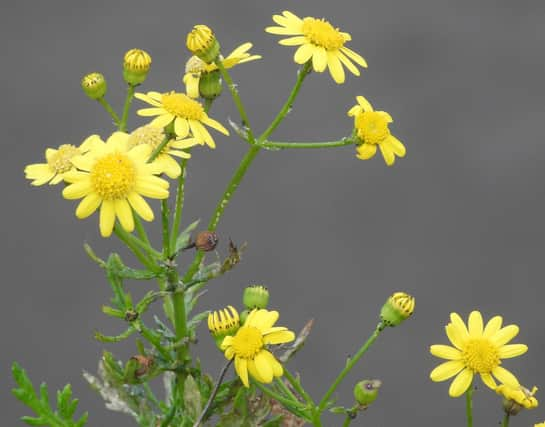Wildlife: Oxford ragwort spread by rail from city of dreaming spires


Grazing animals will often avoid the live plant but cannot distinguish it when dead in the cut hay. The plant has poisonous glycosides or alkaloids, and these can bioaccumulate in animal tissues with effects such as chronic liver failure. All the related plants will have these or similar compounds in their tissues but in varying amounts. Whilst not necessarily very poisonous, contact with skin is best avoided. There are several wildflowers in the ragwort family, and some produce stunning displays when in bloom and are a great attraction to insects such as butterflies and moths and some of these at least, benefit from the absorption of toxins as protection from predators. However, one of the less widely known species is the Oxford ragwort which is pictured. This is an introduced wildflower and either an annual or a short-lived perennial weed of waste ground, walls, waysides, and other disturbed areas. It occurs as a casual on arable land but is absent from grassland.
The species came originally from Sicily in the Mediterranean where it is found on exposed volcanic soils. By the eighteenth century the plant had been ‘discovered’ and seed brought back to the Oxford Botanic Gardens where it was observed by eminent botanist Sir Joseph Banks. The plants in the Oxford Botanic Gardens produced seed which escaped to establish across Britain, and hence its common name. Banks recorded it there in the 1770s and by 1794 it was spreading into the wider landscape, its windblown seeds with their parachute pappus wafting easily into the town beyond. It reached Oxford Railway Station by the 1830s and then spread around the country via the railway network. From that time, it colonised widely but only in urban, disturbed habitats and never above three hundred metres altitude. Swedish botanist Carl Linnaeus named the plant from specimens sent from Oxford Botanic Gardens, calling it ‘Senecio squalidus’ because of its association with dereliction.
Advertisement
Hide AdAdvertisement
Hide AdProfessor Ian D. Rotherham, researcher, writer & broadcaster on wildlife & environmental issues, is contactable on [email protected] ; follow Ian’s blog (https://ianswalkonthewildside.wordpress.com/ ) and Twitter @IanThewildside